Hey wine adventurers, welcome to a delightful journey through the lush vineyards of Croatia! This is Matthew from Exotic Wine Travel, and I’m thrilled to team up with SJ Begonja, a true Croatian local, to bring you this exciting exploration of Croatian wine. 🍷🌿
Do you dream of strolling through the stunning landscapes of Croatia, where there is – the rich, untapped world of Croatian wine, a secret kept for over 4,000 years!?
A lot of you ask us, ‘How long has Croatia been crafting these liquid treasures?’ Imagine this – they’ve been at it since the Bronze Age – that is a long history of winemaking, wouldn’t you say?
So, are you ready to tantalize your taste buds? We’re about to introduce you to five Croatian wines that are nothing short of spectacular. And because we know you’ll be eager for more, we’ve also curated a list of the finest wineries in Croatia that are absolutely worth a visit. Join us, Matthew and SJ, as we uncork the hidden wonders of Croatian wines and share with you the best sips and spots this beautiful country has to offer!
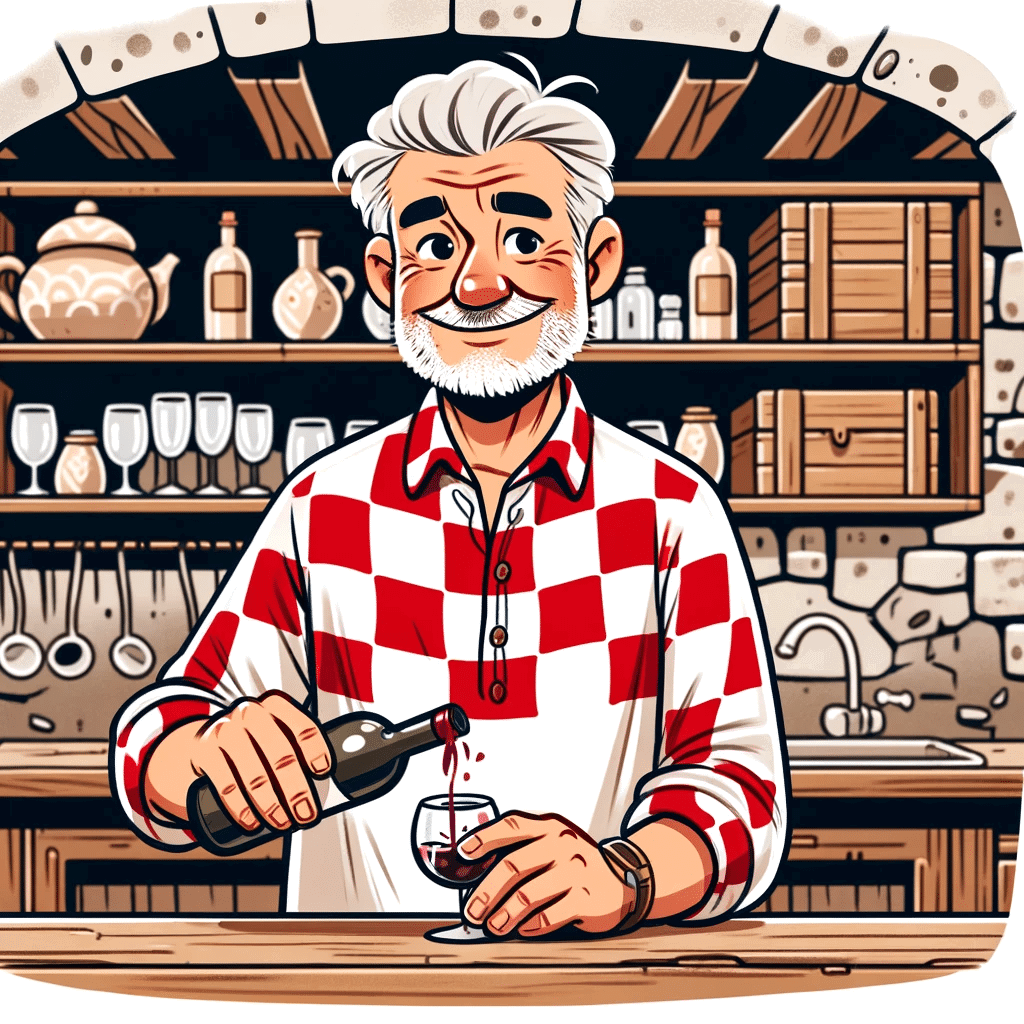
Cultivation and winemaking in Croatia began with the Illyrians, followed by the ancient Greeks. In fact, Croatia has the oldest continuously planted vineyard in the world.
The Stari Grad Plain on Hvar island, lapped by the Adriatic Sea, has been planted with wine grapes for 24 centuries and was added to the UNESCO World Heritage List in 2008.
Croatia was part of Yugoslavia until 1991. During Yugoslavia’s socialist era, farmers were forced to sell their grapes to large, state-owned cooperative wineries where quantity was placed above quality.
The government also discouraged people from setting up their own wineries. Soon after Croatia gained independence, many growers started making and bottling wine under private labels and continue to do so today.
Croatia is home to at least 130 native different grape varieties.
Around 40 of those are currently being made into wine and sold commercially. Many of these grapes have unique qualities that cannot be found anywhere else in the world.
Wine in Croatia is easily found, but here are five wine grapes that we recommend every wine lover to seek out!
Skip Ahead To My Advice Here!
1. Graševina (Grahsh-ah-vee-nah)

Graševina is the most widely planted wine grape in Croatia. No list of wines about Croatia would be complete without it.
The spiritual home of the white grape varieties of Graševina is the town of Kutjevo in Slavonia, one of Croatia’s greatest wine regions. It is known as Welschriesling or Italian riesling in other parts of the world.
In the past, this grape was used to produce cheap, inexpensive quaffing wine. Many locals use cheap Graševina to make gemišt, a spritzer of sparkling water and white wine.
Today, producers have realized that Graševina can produce outstanding wines in different styles–from dry to sweet and sparkling.
The most common examples are the dry white wines of Graševina that offer melon, white pear, and grassy flavors.
This Croatian white wine goes perfectly with shellfish.
Recommended Wineries in Croatia: Adžič, Enjingi, Iločki Podrumi, Krauthaker, Vina Belje
Check out other reasons to put Slavonia on your Croatian itinerary here!
2. Pošip (Posh-hip)
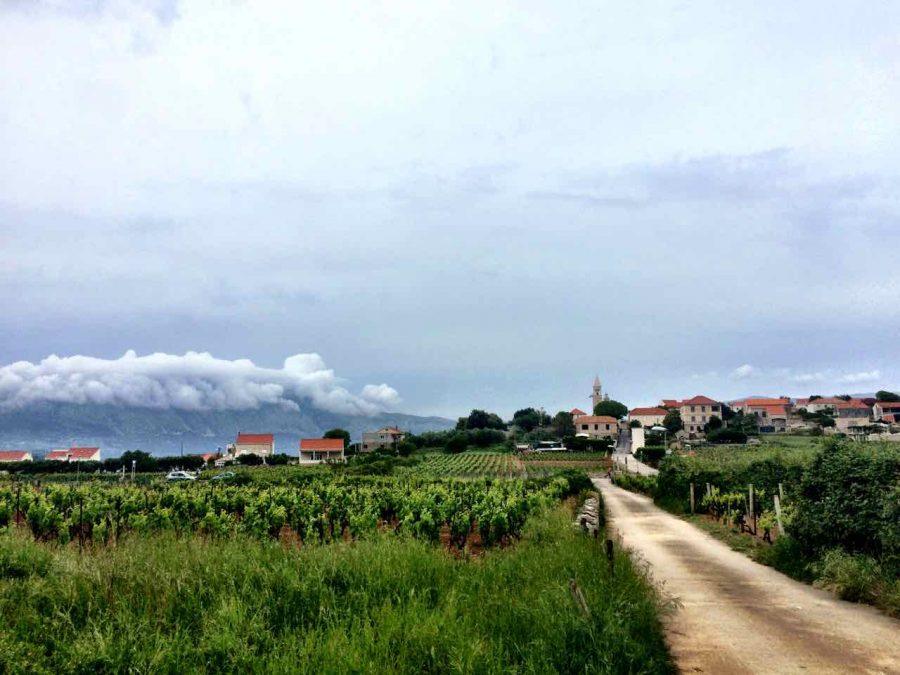
A Croatian white wine grape native to Korčula in Dalmatia, Pošip is grown throughout the Dalmatian Coast.
However, many winemakers claim that the island of Korcula produces the best grapes. The island of Korčula is rumored to be the famous Venetian merchant and explorer Marco Polo’s birthplace.
In the past, wines made from this grape were oxidized and of poor quality. These old examples would be unrecognizable to today’s Pošip lovers. But thanks to a quality revolution, those oxidized Pošip wines are a thing of the past, and there are many outstanding Pošip wines to be enjoyed.
Pošip wines are relatively big in body and have tropical fruit flavors and mineral undertones that make them a perfect Dalmatian seafood partner.
Recommended Wineries in Croatia: Grgić, Korta Katarina, Krajančić, PZ Pošip Čara, Zlatan Otok
Brands We Use And Trust
3. Malvazija (Mal-vahz-ee-yah)
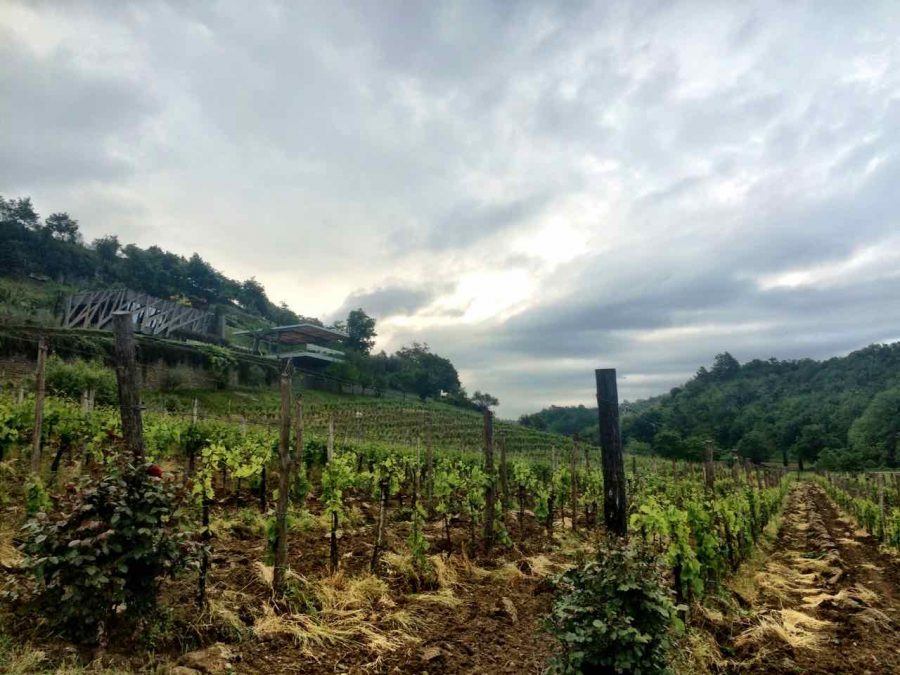
Malvazija Istarska is an indigenous white wine grape. As the name suggests, it is at home in Istria.
Over 20 types of Malvasia grapes are found in the Mediterranean climate growing areas, but Malvazija from Istria tastes distinctly different. It has become the flagship grape of Istrian wines Istria, and nearly every producer in Croatia’s wine regions makes a type of Malvazija wine.
Malvazija can be made in various styles, including fresh and fruity, barrel-aged and sophisticated, and macerated white/orange wine.
The fresh and fruity wine examples are the easiest to find. They are summery white wines with floral and peach flavors. These wines are absolute crowd-pleasers, and there’s hardly ever a bad Malvazija wine on the market.
If you are eating out at a local Konoba or restaurant and don’t know which wine to choose, Malvazija makes a sensible default choice.
Recommended Wineries in Croatia: Coronica, Clai, Kozlović, Matošević, Vina Laguna
4. Teran (Teh-rahn)

A cousin of Refosco dal Peduncolo Rosso, Teran is a Croatian common indigenous red grape variety widely planted in the northwest corner of Istria–an area that boasts mineral-rich, red clay soils known as Terra Rosa.
Teran is also found in Slovenia and Italy, where it is called Terrano.
In the past, many producers thought that this grape was a hassle to work with because of its high, enamel-ripping acidity. Today, many Croatian wineries make good examples of Teran, using it to make monovarietal wine and blend it with Cabernet Sauvignon and Merlot.
Teran tends to produce dark-colored wines with wild berry and iron flavors. Fans of acidic Italian red wines will feel right at home when drinking this wine. Wines made from Teran pair well with rich-flavored food such as pasta with truffle, a famous dish in Istria.
Recommended Wineries in Croatia: Benvenuti, Dobravac, Kabola, Legovina, Roxanich
5. Plavac Mali (Plah–vahts Mahl-ee)
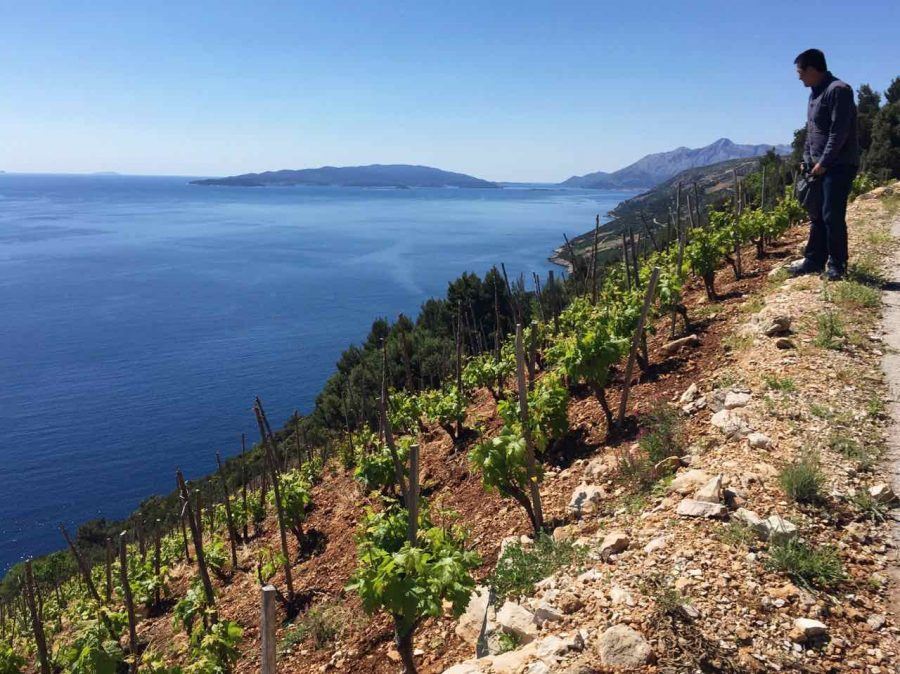
Plavac Mali is another Croatian red wine grape that many Croats are most proud of. It is the offspring of Crljenak Kaštelanski/Tribidrag, also known as the original Zinfandel.
Wine made from this grape is ubiquitous throughout Dalmatia and will be pushed to you in nearly every konoba and restaurant along the coastal wine regions.
Because of the high alcohol levels and bitter tannins, some people may find Plavac Mali wine off-putting. Indeed, there are many average examples around, but with some diligence, you’ll be rewarded handsomely.
Tasting an excellent example of Plavac Mali will leave you with flavors and nuances that can be out of this world. Plavac Mali wines have the unique characteristics of red fruit, rose petals, earth, and an alluring perfumey overtone when done right.
These are big red wines that match well with red meat.
Note: Dingač and Postup were Croatia’s first appellations; they are wines made from Plavac Mali.
Recommended Wineries in Croatia: Bura-Mokalo, Kiridžija, Saints Hills, Skaramuča, Tomić
These Wineries In Croatia Are Waiting For You
🍷 Let’s raise our glasses to my partner-in-wine, Mate Begonja, better known as Mr. Chasing the Donkey. If you think you love wine, wait till you hear about Mate! He’s not just a wine lover; he’s a full-blown wine explorer.
Every year, without fail, he embarks on a wine pilgrimage across Croatia and sometimes even further across Europe.
His adventures in the vineyards are nothing short of legendary. So, as we dive into this part of the blog, let’s follow Mate’s footsteps and uncover the hidden gems of Croatian wineries. Who knows, we might find your next favorite bottle along the way! 🍇
Croatian Wineries By Croatian Regions
Now that you know all about the indigenous grapes and main wine regions across parts of Croatia, you are now ready for your wine tasting at one of these wineries in Croatia:
- Istrian Peninsula And Kvarner Wines & Wineries
- Matošević Winery
- Damjanić Winery, Poreč
- Agrolaguna, Poreč
- Cossetto Winery, Village Of Broskvari
- Clai Winery, Grožnjan
- Trapan Winery
- Kabola Winery, Momjan
- Prelac, Momjan
- Vina Fakin, Motovun
- TOMAZ Winery, Motovun
- Benvenuti Winery, Motovun
- Roxanich Wine and Heritage Hotel, Motovun
- Coronica Wines, Umag
- Kozlovic Winery, Umag
- Vina Deklic, Vizinada
- Veralda, Brtonigla
- Dalmatia Wines & Wineries
- Komarna Wine Region
- Volarevic Winery
- Rizman Winery
- Saint Hills Winery
- Zadar Wine Region
- Degarra Winery, Zadar
- Fiolic Winery
- Skaulj
- Kraljevski
- Sibenik Wine Region
- Testament Winery
- Rak Winery
- Sladic Winery
- Ante Sladic Winery
- Bibich Winery
- Adriatic Coast – Dalmatian Islands Wine Region
- Boškinac Winery
- Katunar Winery
- Ahearne Vino
- Stina Winery
- Bire Winery
- Vina Tomic
- Pelješac Peninsula WineriesThe Peljesac Peninsula is close to the city of Dubrovnik.
- Vicelić Winery, Pelješac
- Grgić Hills Winery
- Korta Katarina Winery
- Wnderwater Wine Cellar Edivo Winery, Pelješac
- Miloš Winery, Pelješac
- Matuško Winery, Pelješac
- Konavle Wine Region
- Crivik
- Karaman
- Komarna Wine Region
- Eastern Croatia & Continental Croatia Wines & Wineries
- Vuglec Breg Winery
- Galic Winery, Kutjevo
- Krauthaker Winery, Kutjevo
- Sontacchi Winery, Kutjevo & Venje
- Vostinic Klasnic Winery, Graberje Ivanicko
- Josic Winery, Baranja
- Tomac Winery, Zagreb
- Korak Winery, Plešivica
- Bodren Winery
- Bolfan Winery
- Winery Jagunić, Plešivica
- Ivančić Griffin Winery, Plešivica
- Sember Winery, Pavlovčani
If you can not make it to one of these, head to a wine bar or restaurant and ask about what they have to offer.
Want To Learn More About The Best Croatian Wine?
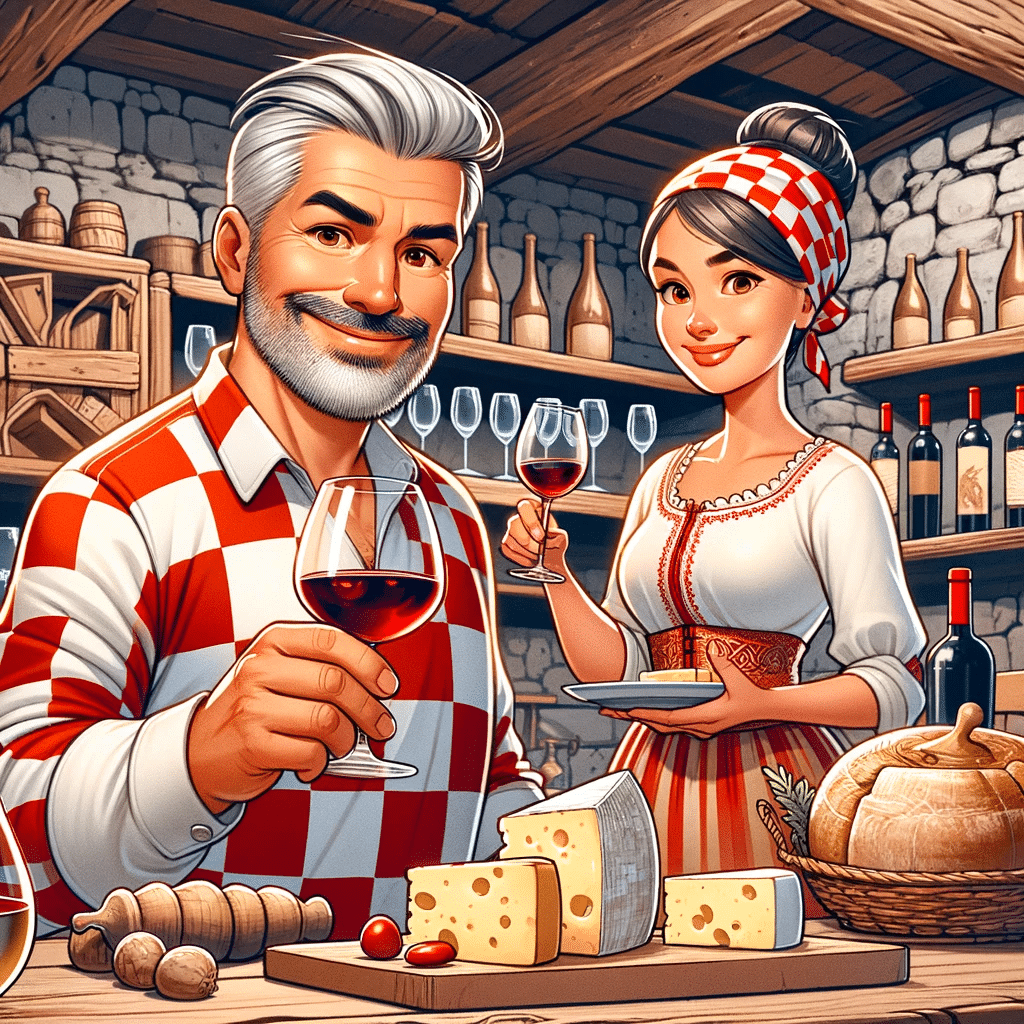
There are many more wine grapes and world-class producers to be discovered!
Most visitors come to Croatia to relax and soak up the sun and may not have the time to research and hunt down these excellent Croatian wines.
You worked hard for your Croatia holiday; it shouldn’t be spent drinking bad Croatian wine. We’ve spent seven months traveling through Croatia and tasted thousands of Croatian wines. We’ve even taken a combo food & wine tour + cooking class you might love.
Croatia is producing some of the most exciting wines in Europe. Let us help you find them all in one place – an eBook.
 Cracking Croatian Wine: A Visitor-friendly Guide is a practical and informative book designed for people who enjoy wine either casually or with great curiosity and vigor.
Cracking Croatian Wine: A Visitor-friendly Guide is a practical and informative book designed for people who enjoy wine either casually or with great curiosity and vigor.
The most common problem wine lovers encounter when visiting a wine region that they’re unfamiliar with is spending their limited amount of time sifting through all the wines and producers on the shelves. And Croatia’s wine production increases yearly, so it’s hard to keep up.
This book will provide pertinent information to maximize your time and pleasure in Croatia’s wine country.
You Will Learn:
- An Introduction to Croatia – An overview of Croatian wine history, wine regions, general climatic and geographical features, Croatian cuisine, and wine styles available to complete the gastronomic experience.
- Wine Grapes in Croatia – A rundown of the native and international wine grapes planted in Croatia, along with a pronunciation guide to help you order wine like a local!
- Wine Label Interpretation – Croatian wine labels can have a lot of information on them. This book offers a guide to understanding every line on the label, what to look out for, and what to ignore.
- Wine Recommendations – Recommendations on wine producers and over 120 wines to try from all four wine regions in Croatia. Wine recommendations are complete with tasting notes.
- Featured Wine Personalities – These people will offer anecdotal insights and information about the existing wine culture and Croatia’s prospect as a wine destination.
Is there a Croatian wine type or winery you know of that we should consider adding to the list? If so, let us know below.


Vavv. I wonder that wine. I hope I drink wine one day :)
Yes I love Croatia wines
Never tried it! But i really love to try it once.
My brother suggested I may like this website. He was totally right.
Thanks for this information!!